Because there are so many materials out there, it can sometimes be overwhelming to choose your new hiking outfit. Whether you are looking for a functional base layer or a new pair of leggings, there are numerous materials to choose from and each of them comes with its benefits and drawbacks.
I have previously discussed some of the most common materials used for tents and backpacks here on the blog, but have not yet gone into one of my absolute favorite natural materials – wool!
Cashmere and merino wool are functional fabrics that are both phenomenal for outdoor activities. However, the slightly finer fibers used in cashmere wool make it warmer and more comfortable than merino wool. On the other hand, the thicker fiber of merino makes it more durable, and it is cheaper!
I personally love quality materials and the materials directly sourced from nature such as wool, down and wood have always fascinated and appealed to me.
These materials have all been used for millennia and have therefore really stood the test of time!
Wool is no exception, and although wool is an ancient material, the modern fabrication methods have spun out (literally!) a whole new level of wool quality products.
Contents
What are the benefits of wool compared to synthetic fabrics?
Today, synthetic fabrics made from nylon and polyester make up the majority (>60%) of the textile produced. Cotton comes next in the line at around 30% and wool accounts for less than 2% of the world textile fiber production.
All yarns made from animal fur can be classified as wool, and many variants from different animals exist.
Today, the most popular sources of wool are sheep, but wool can, in theory, be made from any animal with fur that is long enough for the fibers to perform the weaving process that converts it into yarn.
Whereas the thick wool you know from your grandfather’s fishing sweater is made from the thicker, coarse, and itchy kind (most often Shetland wool), many modern wool products are actually comfortable to wear!
Despite being in relatively low demand, wool has some substantial benefits over synthetic fabrics:
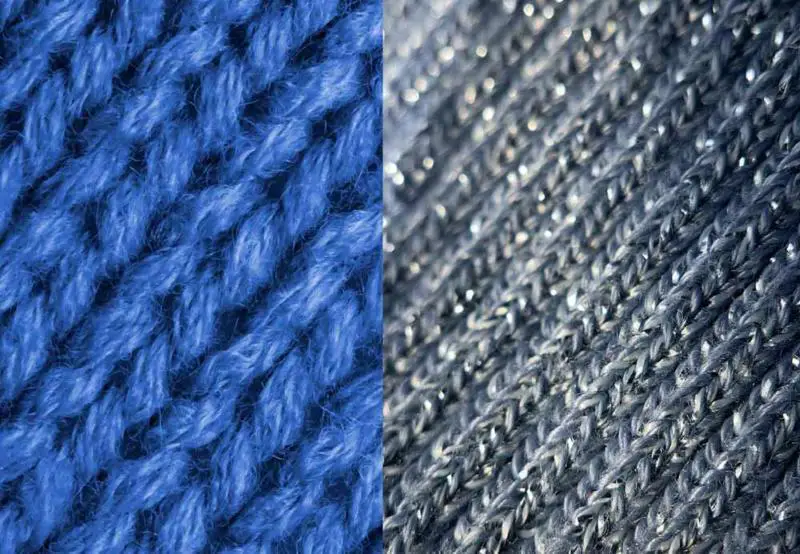
1. Wool is warm!
Probably something you have heard before is that wool retains body heat very well. This is due to its “fluffiness” or loftiness, which refers to its ability to contain air between its fibers.
Whereas synthetic fabrics such as polyester can also be very warm, especially in the form of fleece, it does not match wool – especially when wet!
This is why wool is superior when it comes to winter wear like socks or gloves that gets sweaty or wet easily, as the wool will still retain its warmth the lanolin of the wool will reduce odors.
Because air conducts heat less than wool fibers, the thinner the fibers the more space for the insulating air that keeps you warm!
2. Wool is breathable and dries fast!
Because the wool fibers allow a lot of air to be trapped between your skin and the outdoors, it also optimizes the surface area from which water or sweat can evaporate.
This moisture transport helps not only to keep you dry but also to lead your sweat away from the body to cool you down when needed.
Contrary to synthetic materials or cotton, water does not stick to or collapse wool. When water is absorbed by wool, the hydrophobic fibrous mesh keeps its structure wide and open.
The wool fibers can bind water to a certain point (around 30%) after which it starts to saturate, collapse, and feel cold.
Be aware though, that wool and water combined with heat will lead to shrinkage of the wool protein fibers!
However, the immense surface area of the fibers and the lanolin content makes it dry quickly to regain its insulating capabilities.
3. Wool is soft and flexible!
Depending on the thickness of the fibers used, wool will be soft in its feel. Cashmere and merino wool has some of the finest fibers of any natural materials (although some beat them – see below!).
The thin flexible fibers of wool make it very comfortable to wear, especially if the wool fibers are straight and not too curved.
Thick and curved wool fibers lead to the itchy nature of cheaper, rough, wool yarns used to make thick sweaters, etc.
Wool is extremely flexible compared to the most flexible synthetic nylon and polyester fabrics that can only extend themselves around 26% and 15% respectively.
In fact, wool is one of the most flexible fabrics and can be stretched up to 40% longer than its original length!
4. Wool does not stink when you sweat!
Common for all lamb’s wool products is that they do not retain body odor to the same extent as cotton or synthetic fabrics do. This is partly because sheep cannot shower and therefore have evolved strategies to combat odor-producing microorganisms in their woolen coat.
Sheep produce an oily compound called lanolin that is secreted from the skin of sheep and mixed into its woolen coat.
This compound is found in some form or another in all wool types and it has antimicrobial effects, a property partly mediated by keeping water away, and thus prevents the growth of bacteria and fungi that might otherwise infest the wool.
Bacteria are not only harmful and can make you (and sheep) sick, but the bacteria also convert the sweat produced by your body into smelly compounds.
Having antimicrobial properties, wearing cashmere or merino wool (that is not too processed and rid of lanolin) will therefore prevent bacterial growth and largely be devoid of body odor.
This, however, does not mean that wool is devoid of odor altogether as lanolin has its own distinct smell.
Lanolin smells especially discernable when rancid – the classical “sheep” smell and woolen clothes will therefore have a certain scent to it no matter what…
5. Wool is fire resistant
Another benefit of wool compared to its synthetic counterparts is its fire resistance. While wool can certainly burn, you do not risk getting “permanent” socks when warming your feet at the fireplace. Whereas polyester and nylon melt at around 250 degrees Celsius, wool does not melt and ignites only above 600 degrees Celsius!
Because wool does not melt as plastics do, it will not stick to your skin or produce toxic fumes when subjected to a naked flame. Instead of collapsing, its interlinked fibers extend and smolders, which help insulate deeper layers from the outside heat.
In this manner, wool can indeed protect against fire and is often used as part of security garments by firemen and race drivers!
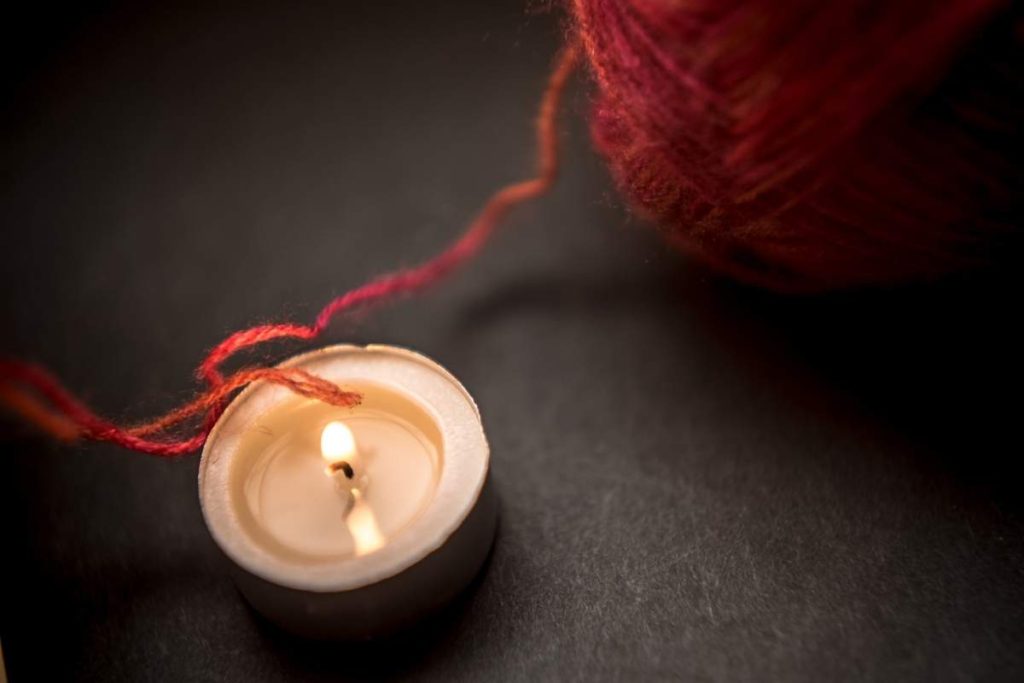
6. Wool is sustainable
Finally, wool is a natural product which makes it somewhat more sustainable compared to synthetic products made from fossil fuels (read my post on the environmental impact of nylon and polyester to find out why they are not exactly good for the environment…).
Most wool producers in the western world are also quite conscious of the welfare of their animals as this ensures the quality needed to produce the finer cashmere and merino wool products that are in demand from their wealthier customers.
If you are into hiking and outdoor adventures, check out my 20 favorite lightweight backpacking tents for under 200$ and my top 10 recommended gear items for new hikers!
You will also want a good (filter?) drinking bottle and a proper hiking backpack (I prefer Fjällräven or Osprey!) but The North Face also makes good cheap hiking gear.
What makes cashmere and merino superior to ordinary wool?
Wool is a broad definition and includes every type of animal fiber from which yarn can be made.
Whereas most wool products are made from sheep and have a fiber size in the range from 10-40 micrometers in diameter, merino and cashmere wool range between 10-20 micrometers in diameter.
The diameter of a human hair is around 70 micrometers in comparison.
Whereas merino wool is made from the finest wool of merino sheep, cashmere wool is made from the undercoat of the cashmere goat.
Due to the fine size of the wool fibers used to produce the yarn of merino and cashmere wool, they both display extraordinary heat retention and moisture transport, which are the defining features of fine wool products.
These are two of the core features important for long-lasting outdoor activities such as hiking, trail running, skiing etc.
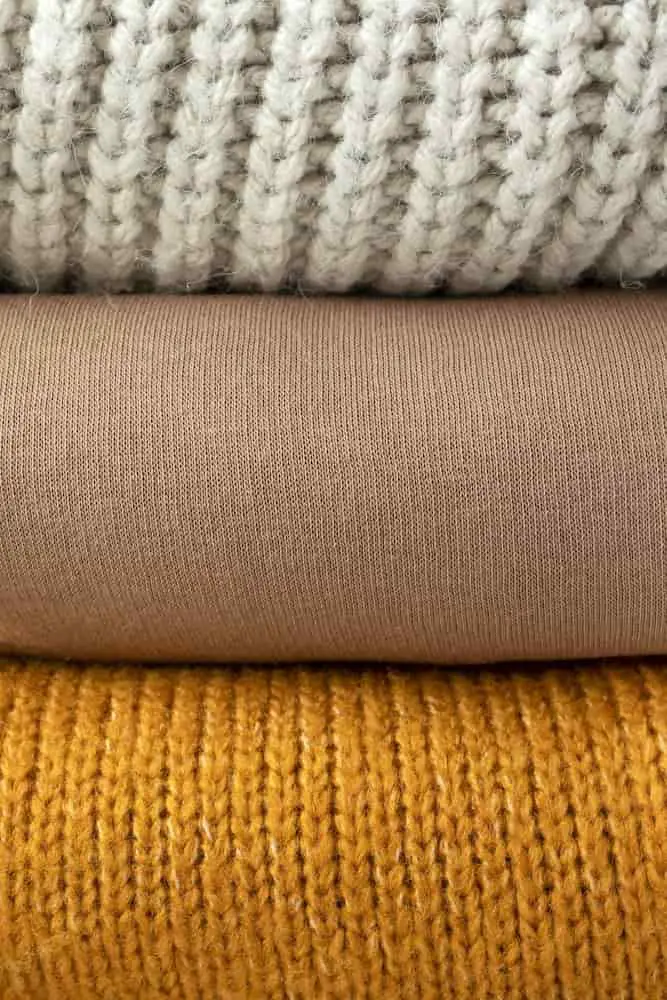
Is cashmere or merino wool the better choice for hiking?
While cashmere and merino wool are equal in many ways and share all the traits that make wool great for outdoor activities, there are some differences that may be crucial to you when roaming the outdoors.

Is cashmere warmer than merino wool?
Because cashmere boasts thinner fibers and is loftier than merino wool, it does keep the heat better and some people report an up to seven times higher insulation ability of cashmere compared to merino wool.
This is, however, likely an overestimation and the true warmth of cashmere is more like warmer corresponding to the fineness of the wool fibers. For cashmere, an average of 19 micron is required whereas merino wool can be up to 30 micron thick.
This added thickness would likely reduce insulation ability around 2-4 fold, but not much further than that.
Of course heat retention also depends on the way the fabric is weaved, treated etc. And the amount of lanolin present in the type of wool.
This makes cashmere wool the ideal base layer for hiking and other outdoor activities in colder climates.
Cashmere wins.
Is cashmere or merino wool the softest?
Due to the slightly thinner and longer fibers of cashmere wool, it is softer to wear than most merino wool products.
And because the fibers of cashmere wool tend to curve less than those of merino wool, and therefore do not “stick out”, cashmere may be less itchy compared to merino wool.
Cashmere wins.
Is cashmere or merino wool most durable?
Due to the thinner fibers of cashmere wool, it tends to be less durable compared to merino wool and more care needs to be taken when subjecting it to wear and tear or excessive washing.
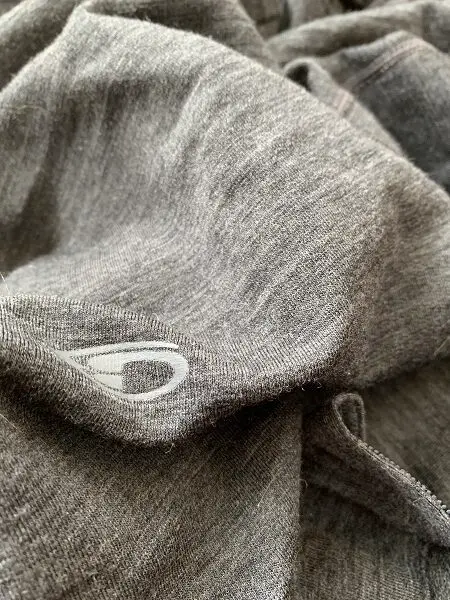
Also, merino wool is more resistant to washing and tumble drying as merino wool does not shrink to the same extent as cashmere wool would, which may be important if worn as a base layer for intense exercise activities.
Merino wool wins.
What smells the most cashmere or merino wool?
Because cashmere wool does not come from sheep, it does not contain the antibacterial lanolin oil to the same extent as merino wool, which may result in less inhibition of smelly bacteria.
However, goats certainly produce similar compounds that, although less studied, may be equally effective in preventing smell. For both materials, the anti-odor effect of lanolin is reduced unless washed correctly.
Tie.
Is cashmere or merino wool most expensive?
Because each cashmere goat can only produce around 200g (7 oz) of wool each year (barely enough a pair of leggings or a scarf) and merino sheep produces up to 10kg (22 lbs).
Even though some wool (the greasiest parts) is discarded in the production of merino wool, cashmere still demands much more resources to produce than merino wool does and is resultingly more expensive.
Merino wool wins.
Is cashmere or merino wool easier to get hold of?
Due to the limited capacity of cashmere production, the market for cashmere garments for hiking is not very big.
Therefore, it may sometimes be easier to find the exact merino wool item needed for a hike.
Merino wool wins.
What are the downsides of cashmere and merino wool?
Due to the thin fibers of merino and cashmere wool, these fine wools tend to be less durable than synthetic or cotton textiles.
They do, however, allow more stretch and will therefore not tear as easily as synthetic fabrics if pulled.
Repeated rubbing or washing, however, is going to wear merino and cashmere wool down more quickly, but due to their odor-resistant properties, washing will not be needed quite as often.
As for any wool product, both types of wool may also shrink if washed incorrectly.
The major disadvantage of fine wool products is their price! This is the main factor holding me back from filling up my backpack with fine wool products.
Some of the newer hybrid products used in hiking contain fine wool as well as synthetic fibers to create more durable products while keeping most wool’s benefits.
These products will often last longer and are oftentimes cheaper.
Cashmere vs merino wool for base layer?
Both cashmere and merino wool are great options for a base layer, each with their own unique properties and benefits.
Pros of Cashmere as a Base Layer:
- Warmer: Cashmere is significantly warmer than merino wool, likely around 2-4 times with some sources claiming up to eight times the warmth of merno.
- Softer: Cashmere has a higher loft, making it softer to the touch.
- Can be worm thinner and lighter: Cashmere is loftier and has thinner fibers than merino wool, making it a good insulator even when thin and light fabric is used.
Pros of Merino Wool as a Base Layer:
- More Durable: Merino wool is sturdier and resists pilling more effectively.
- Easy to Care for: Merino wool generally requires less care in washing and maintenance.
- Breathable: Merino wool is highly breathable, comparable to cashmere, keeping you warm and dry while in use.
- Suitable for Sports: Merino wool base layers with a density above 250g/m2 are suitable for sports, as they are not too heavy even when soaked with sweat.
When choosing a base layer for hiking, both cashmere and merino wool are great options, but you should consider factors such as the climate you will be in, the level of insulation you need, and the level of comfort you prefer.
Cashmere is a great option for colder climates, as it is significantly warmer, while merino wool is more durable and easier to care for.
They both beat synthetic e.g. polyester base layers except when it comes to price.
Ultimately, the choice between cashmere and merino wool as a base layer will come down to personal preference and the specific needs of the user.
A base layers made of wool with a density of 170g/m2 and less are suitable for high temperatures, while those with a density above 250g/m2 tend to be too heavy for summer sports activities but great for winter sports.
In conclusion, the choice between cashmere and merino wool for a base layer depends on the intended use and personal preferences.
Cashmere provides better insulation but may be less durable and more expensive, while merino wool is more durable and easier to care for, but may not be as warm.
Cashmere wool vs merino wool for skiing?
Skiing is an activity that does not subject the clothing to the same wear and tear as wearing a heavy backpack on a hiking trail does.
The woolen socks used in the rigid skiing boots are also not rubbed as much against when compared to hiking boots when trekking tens of miles per day.
Under such circumstances where warmth is more important than durability, cashmere wool would be the better choice.
Woolen gloves are also great for winter sports due to their great cold weather performance and wet weather.
It also boasts a somewhat more luxurious look and feels that may also benefit the long nights after skiing.

Are there finer wools than merino and cashmere wool?
Yes! There are animals such as muskox, alpaca, guanacos, and vicuña that produce even finer wool with a diameter down to 6 micrometers! The three latter all belong to the camelid family of mammals, which are only found in South America.
The finest of these wools comes from the vicuña, which resembles the wild ancestor of alpacas. The wool of vicuñas is extremely expensive because they cannot easily be domesticated, and it takes three years for their wool to grow back after shaving!
It has many of the same favorable properties as merino and cashmere, including the anti odor and anti microbial effects of lanolin.
Therefore it should not be a surprise that vicuña wool is mostly reserved for luxury products and a simple scarf costs around 2000$!
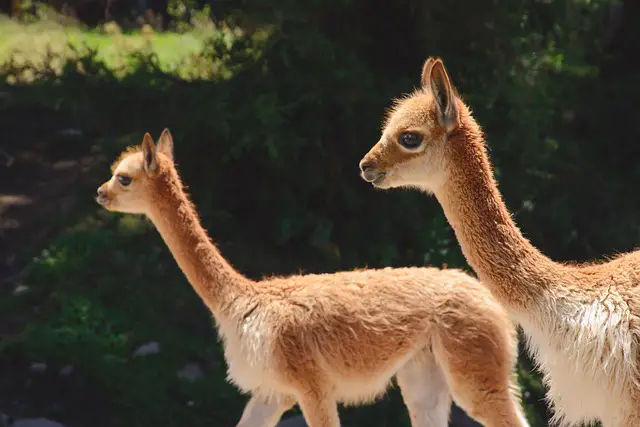
Final thoughts
Cashmere and merino wool are both great products for hiking, running, skiing, and all outdoor activities really.
Being soft and functional fabrics, which share many of the same properties due to their similar fiber structure, you will not go wrong with any of them!
Both types of wool have trace amounts of odor reducing and antibacterial lanolin compounds, which is the case for most wool types on the market.
The slightly finer fibers used in cashmere wool make it loftier and therefore warmer than merino wool.
The finer feel appeals to many luxury brands, and it has a unique and distinct feeling to it. However, merino wool is more durable and less expensive, which makes this the material of choice when I venture into the outdoors.
Alternatively, you may choose apparel made from nylon or polyester, which are cheaper and more durable but less functional.
References:
https://www.woolwise.com/wp-content/uploads/2017/07/Wool-412-512-08-T-03.pdf
B.A. McGregor (2015): Weathering, fibre strength and colour
properties of processed white cashmere, The Journal of The Textile Institute, DOI: 10.1080/00405000.2015.1099355
A Review of Sheep Wool Quality Traits. B. W. B. Holman1 and A. E. O. Malau-Aduli

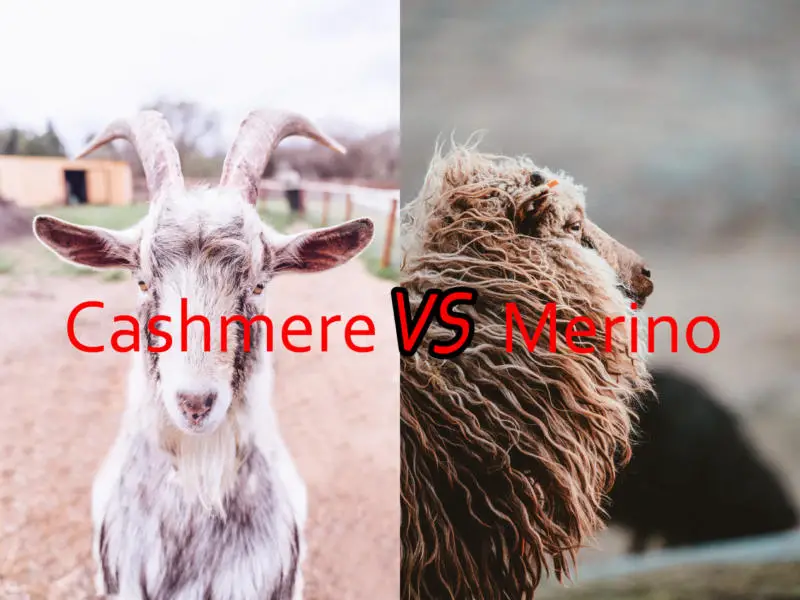




One response to “Cashmere vs Merino Wool – which is best?”
[…] Is cashmere or merino wool best for hiking? […]